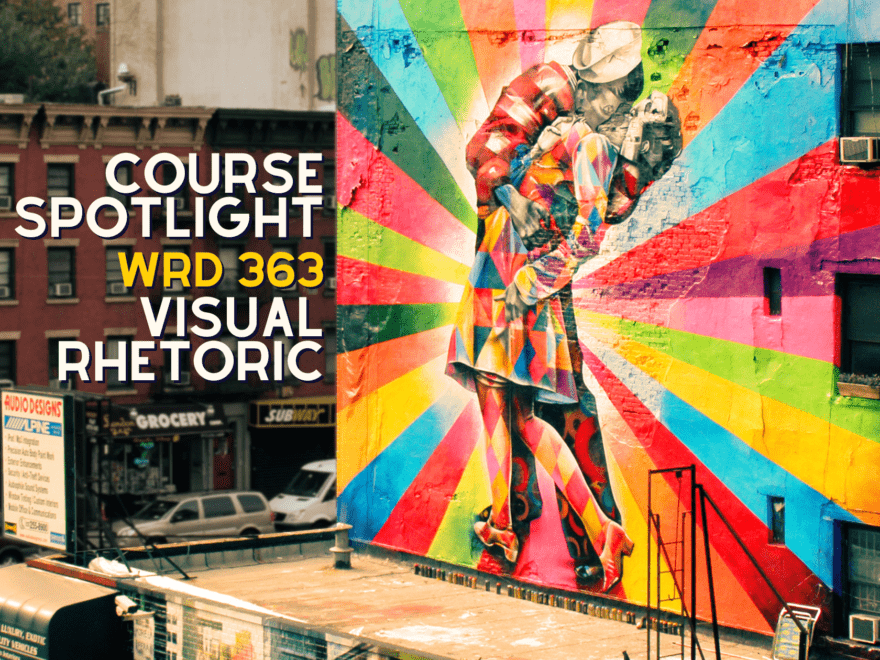From photojournalism to public art to selfies, how do visual images work persuasively to influence viewers? This upcoming Autumn Quarter, students in the in-person WRD 363: Visual Rhetoric course will dive into readings on visual rhetoric, examine visual images, and have the opportunity to create digital visual projects to sharpen their own rhetorical skills.
Read on for more details on the course from Dr. Jason Kalin, who will be teaching it for the fourth time this upcoming Autumn Quarter 2024.
Visual Rhetoric
According to Dr. Kalin, “In visual rhetoric, we think about how visual images, or ‘images’ widely construed, work persuasively to influence viewers – how images shape, reinforce, and change cultural beliefs and actions, social meanings, and collective imaginations.”
Essentially, WRD 363: Visual Rhetoric gives students the opportunity to perform rhetorical analysis with new frameworks, to think about public art and images in new ways, and to notice how they interact with, consume, produce, and share images that shape their own lives and identities.
Projects
The last iteration of the course was split into two units: 1) public art as visual rhetoric and 2) digital visual rhetorics.
During the first half of the course, students studied public art – murals, monuments, memorials, and street art – as visual rhetoric, examining how these “material” images project, illuminate, and articulate political tensions and cultural values. By focusing on values, public art invites viewers to make a judgment: Where do you stand? For this unit of the course, students conducted a rhetorical analysis of a public art piece of their choosing and were encouraged to engage with it experientially.
During the second half of the course, students studied digital visual culture, such as the cultural influence of Instagram and TikTok. Students examined their own digital visual archives, including how they produce and circulate images online to better understand how such visual communication worked to construct their identities, to persuade others, or to build community.
Outcomes
The course has credit for Arts and Literature Learning Domain, so any undergraduate students looking for an interesting AL Domain course should consider taking WRD 363.
As far as why the course matters, in Dr. Kalin’s words, “We are an intensely visual culture, and we have all these metaphors between sight and knowledge: seeing is knowing, seeing is believing, and so on. Becoming more critical consumers and critical producers of images and visual culture is an important part of how we make our own identities and communities.”
Dr. Kalin’s Perspective
I also asked Dr. Kalin about his favorite aspect of teaching WRD363: Visual Rhetoric.
He shared the following:
“I think my favorite part of the course, and maybe the favorite part of any course I teach, is giving students a new vocabulary for thinking about what they’re already seeing and doing. [For example,] we are constantly encountering public art in all these different kinds of ways in our daily lives, but often never really look at them,never really seeing them. They just become a kind of background. This course asks what happens when we start to look at these images instead of looking through them. Giving students rhetorical tools for noticing this and then thinking about things like Instagram, which many students already use but maybe don’t think about it in these ways, helps them re-examine their own behaviors and attitudes and actions in a way that is often rewarding.”
If these sound like topics of interest to you, register for the Autumn Quarter 2024 section of WRD 363 in Campus Connect! Stay up to date with upcoming program offerings through the WRD Blog’s Course Spotlights.
